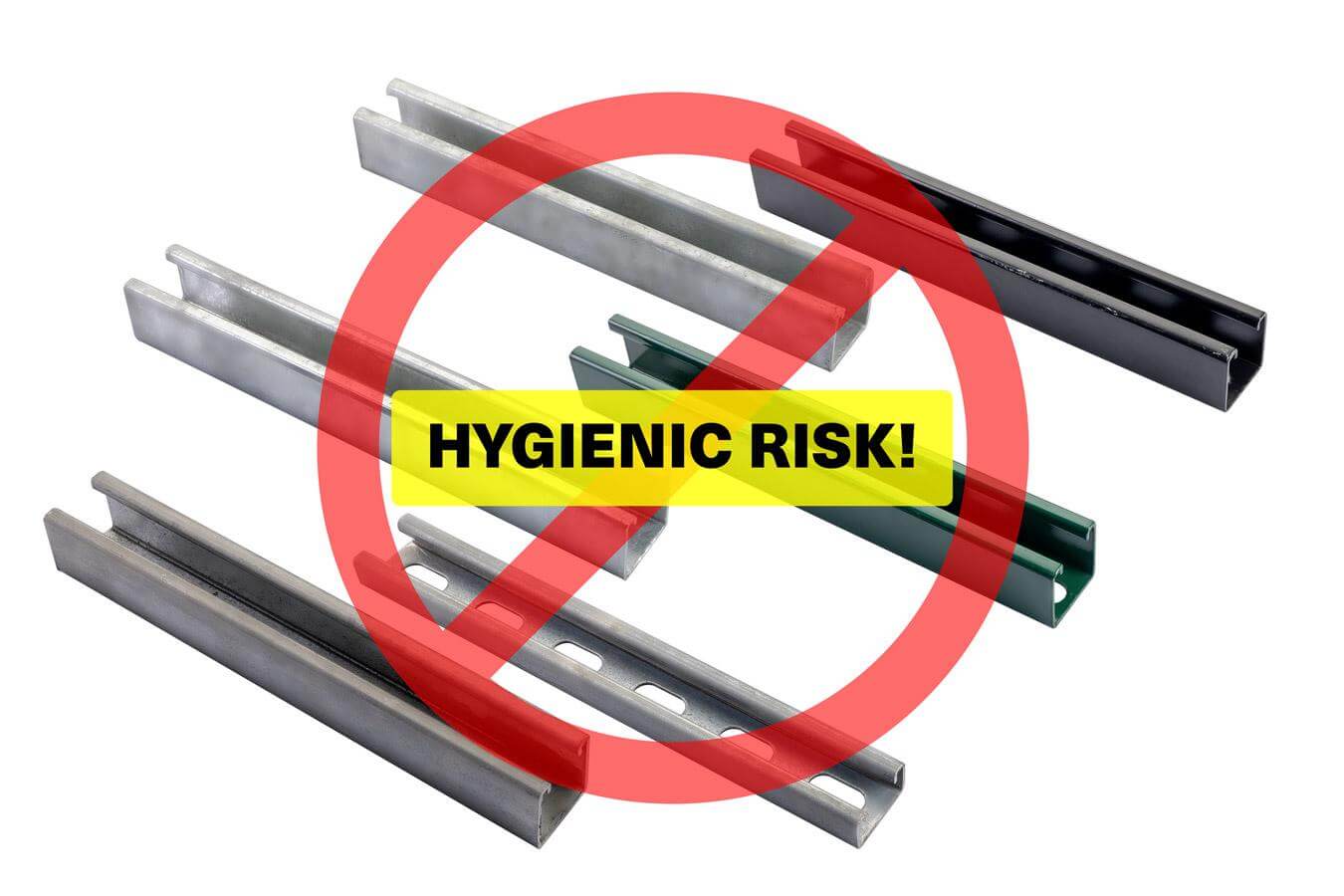The U.S. Food and Drug Administration (FDA) recently reported something many in our industry have long recognized: Recalls for consumable products are on the rise. Catching potential contaminants early is essential as recalls can cost millions of dollars both from the now unsellable products that are recalled and from the potential drop in sales as consumer trust erodes following the news. Testing will always be a necessary part of the process, but companies may want to consider replacing common sources of contamination. Your electrical support infrastructure is a good place to start, as traditional strut systems present a risk versus food-grade solutions.
What Causes Traditional Strut Systems to Become a Contamination Risk?
Strut/metal framing systems offer multiple advantages for installers. These systems are adaptable and versatile. They require minimal cutting to fit and can be fitted with little to no welding and drilling. For food and drug manufacturers, reducing cutting, welding, and other on-site adjustments also lowers the risk of dust and metal particulates getting into the air and potentially contaminating production equipment.
However, traditional struts are purpose-built as a support structure for pipes and conduits in manufacturing environments from a mechanical support perspective. Most are not designed with food production safety standards in mind.
Because of that, traditional channel systems tend to have a significant number of recessed points and crevices that can harbor contaminants such as dust and bacteria. As these contaminants build up or grow over time, carriage pathways such as airflow and condensation can cause these contaminants to leak into production lines. Once this occurs, the risk of contamination grows. Contamination may not be discovered until after the product is in the hands of consumers.
The entire recall was pretty much over within less than 10 days, and yet it still cost millions of dollars.
Contamination caused by traditional struts can lead to costly product recalls. Pinning down the exact cause of recalls is nearly impossible, but Amy Philpott, Vice President with the agriculture law firm Watson Green LLC, helps illustrate the risk in a 2021 Quality Assurance and Food Safety Magazine article:
"In 2013, a produce recall that resulted in no fatalities, no illnesses and involved fewer than 250,000 units cost a medium-sized fresh-cut firm more than $2 million. The entire recall was pretty much over within less than 10 days, and yet it still cost millions of dollars."
Traditional strut systems can be a cost-saving and safety-minded approach for many business applications. However, it can have negative and costly impacts when utilized within manufacturing facilities where hygiene is important, such as food and beverage, and pharmaceutical and drug manufacturing businesses.
Considering an alternative to traditional strut system? The Rocket Rack® platform is available with three rack types (tented, standard, and flat), multiple mounting methods, hardware, and accessories to facilitate installation, as well as standardized and custom sizes and lengths.
Contact us today to learn more and check out our Rocket Rack® product catalog.
